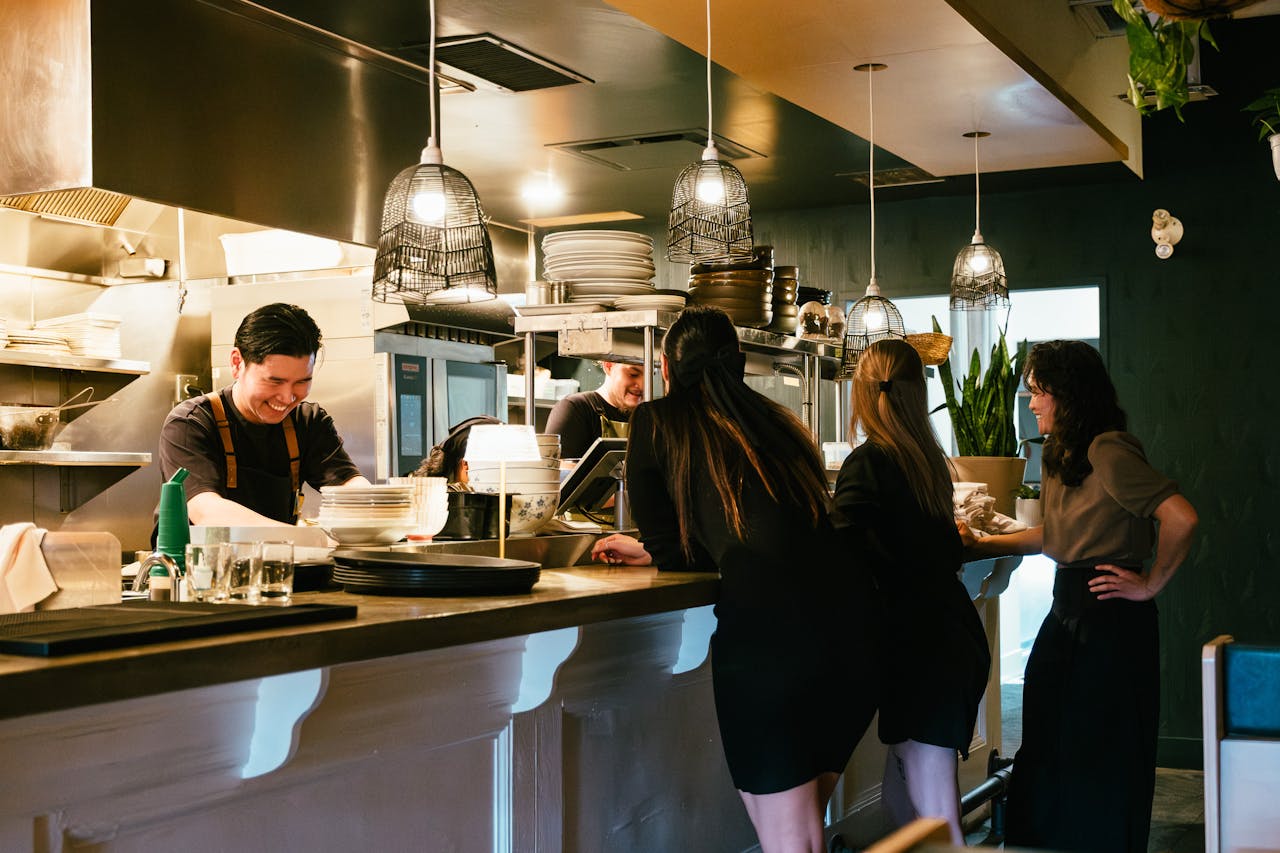Branding Bon Appétit: Crafting Irresistible Branding Strategies for Your Restaurant
Discover effective branding strategies for your restaurant with our insightful guide on TastyIgniter.com. Learn how to define your unique value, craft a memorable name and logo, establish a consistent brand voice, and leverage online presence for maximum impact. Boost customer loyalty and stand out from competitors with our expert tips. Read more in "Crafting Irresistible Branding Strategies for Your Restaurant.

Launching a new restaurant concept is an exciting concept. So is rebranding an existing eatery. However, it requires an absolutely irresistible branding strategy to ensure your restaurant remains top of mind for your patrons while continuing to perform well for you. Dive in now to find out exactly what it takes to create a brilliant brand strategy for your restaurant. Below, we share industry-leading tips and tricks to help you master the road ahead.
Understanding the Importance of Branding in the Restaurant Industry
If you’re still in two minds about whether or not you should pursue a branding strategy for your restaurant, here are some good reasons to consider it:
- Helps to create an engaging and memorable experience for customers
- Increases brand awareness and recognition
- Sets you far apart from the competition
- Gives your restaurant a unique personality
- Builds an emotional connection with your patrons
And with this in mind, let’s explore some ways you can achieve these goals and enjoy all the benefits.
Define Your Restaurant's Unique Value Proposition

Step one is to define your restaurant’s unique value proposition. Here’s how.
1. Identify your target audience and understand their preferences
Like any customer-serving business out there, identifying your ideal target audience is an essential step of the restaurant branding process. It’s the very first step in determining the hows and whys behind your branding strategy. For this reason, you need to conduct a careful analysis of your ideal customer. This will require a thorough research process. When building your ideal customer persona, you need to gain a deep awareness of who they are. What demographic group do they belong to? What socio-economic indicators express your target customers’ living conditions? What are their interests and pain points? What ultimate experience are they seeking and what are their expectations? Once you have an answer to these questions, you can proceed to the next step.
2. Discover your restaurant's unique selling points and differentiators
After you’ve built your ideal customer profile or buyer persona, it’s time to think deeply about what sets your restaurant apart from everyone else. What are the key differentiating factors that make you stand out? Perhaps it’s the experience you provide. Maybe it’s the location and setting. It could be the service of your staff or the type of delicious food that you offer that isn’t available elsewhere. Whatever the reasons may be, it’s time to figure out your restaurant’s unique selling points and build on those in the next step.
3. Create a compelling value proposition that resonates with your target audience
So, you have your ideal customer profile and you know what your restaurant’s unique selling points are. Now it’s time to bring the two together. You need to be able to ensure that your ideal customers will like and support your restaurant on a regular basis through your offering. This essentially means you should create a compelling value proposition that resonates with your target audience. It could be the pricing of your food or the quality and/or variety of your dishes. The dining experience may be a further factor to consider. Ultimately, you want your target customers to always have your restaurant in mind when they are considering going out for a meal.
Craft a Memorable Restaurant Name and Logo
Once the research process is complete, it’s time to focus on creating your restaurant’s name and logo. When it comes to the name, you should think of something unique yet descriptive. Often, shorter names that are easy to pronounce and spell are more successful. That’s because you need to remember that your restaurant will also have a website. Therefore, making searches easy for your patrons can help them find you and make the experience more pleasant. As for the restaurant logo, one thing to consider once it has been created is that it is the visual identity of your brand and there needs to be consistency in its use.
Make sure you have brand guidelines for how the logo should look, how it should be used by third parties, and what guidelines they must follow with regard to using your brand. For example, your restaurant’s name may start with a lowercase letter. This is how you want your restaurant to be referred to by everyone in various printed or other materials.
Develop a Consistent Brand Voice and Personality

We’ve all had experiences with brands that really strike a chord through their brand personality. One of the reasons for these brands’ success is that they are consistent in the use of their brand voice. This means there is no room for deviations from the style guide and you need to constantly work on the brand personality to ensure that your brand is true to itself and the message it stands for.
Design a Visually Engaging Brand Identity
Apart from consistently using your logo, you also need to have a brand identity that’s visually engaging. But what does this mean? Since most people enjoy consuming visual content, it means creating visuals that grab your audience’s attention. This can be in the form of high-quality lifestyle images or even short video content that portrays your brand. Include incorporating QR codes on various materials to offer patrons direct access to exclusive offers or interactive content, further enriching their engagement with your brand. Once again, consistency is a key ingredient when presenting and promoting your restaurant brand.
Create a Compelling Online Presence

Speaking of visual content, did you know that 1 in 4 customers watch a brand’s video on social media each month? And that’s just video content. What about visuals, images, copy, or a combination of all these? It is safe to say that having a social media presence is essential. However, your online presence should go beyond social media. You should also have an optimized website as well as a local presence to make your restaurant stand out and be easily discoverable online. There are numerous lead magnet ideas you can incorporate into your website to entice your visitors more and improve your online presence. For this reason, you’ll need effective search engine optimization (SEO) strategies to drive traffic to your website and convert visitors into patrons. Building a custom app for your restaurant can also assist with this goal. You can easily create it, using no-code tools and help your customers create orders.
Embrace Community Engagement and Partnerships
Apart from having a strong online presence that reaches and drives more of the right patrons to your restaurant, you should also consider embracing community engagement and partnerships. This could come in the form of sponsorships, partnerships, and support for local initiatives. Great examples of these are partnerships with sports organizations or clubs, supporting local charities, working with local influencers, partnering with local businesses, or reaching out to community groups. The more engagement you drive, the more people will hear about your restaurant and want to pay it a visit based on their positive perceptions of your community involvement.
Encourage Customer Loyalty and Advocacy
The lifeblood of any restaurant business is its patrons. You want to make such a great impression on them that they want to keep coming back for more. When you have this down to a fine art, you should consider encouraging customer loyalty. Having your customers spread the word about your restaurant is an exceptional way to boost word-of-mouth and get more patrons paying your eatery a visit. However, there are other ways to achieve this. You should consider implementing customer loyalty programs, offering certain discounts, inviting them to promotional events, and making use of referral programs. You can also make use of brand mention tools to see what your customers are saying about you on social media, reviews on directories, references on websites, etc.
Measuring Branding Success and Iterating Strategies

There’s a saying that goes “what gets measured gets managed” and this certainly applies to restaurant branding efforts. You need to have clear key performance indicators (KPIs) that you want to achieve and metrics to measure to gauge your levels of success. Once you have quantitative and qualitative data, you can draw data-driven insights and replicate successes while reducing efforts that are not bringing you the desired results.
Key takeaways
As we wrap up, here are a few important takeaways that you should consider:
- Creating a strong restaurant brand entails a lot of research and prior preparation.
- There are many branding strategies you can follow but the ones mentioned above are the predominant and most powerful ones.
- Be sure every element of your brand aligns with your restaurant’s identity and aim for consistency in every aspect of your branding efforts.
- After the process is complete, measure the outcomes and stick to strategies that yield the most positive and powerful results for your restaurant.
Author
Velislava Georgieva is an Outreach and Content Manager at Inbound Blogging, specializing in Content Marketing and Outreach Strategies. Besides her passion for digital marketing, she likes yoga, fitness, and hiking. You can connect with her on LinkedIn.





